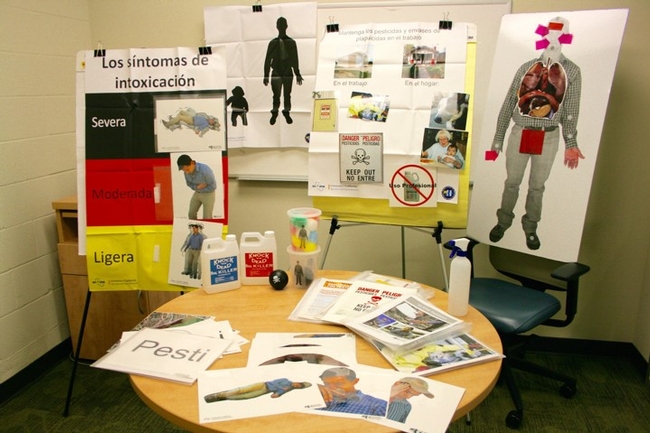The United States Environmental Protection Agency (U.S. EPA) recently published the revised Agricultural Worker Protection Standard (WPS). The WPS is meant to increase protections for agricultural fieldworkers and pesticide handlers from pesticide exposure when working in farms, forests, nurseries and greenhouses. The changes will definitely affect California agriculture, and soon-- as early as January 2017 in some cases.
What major regulatory changes are in store for us and when will they happen?
Several changes are required to be in place by January 2, 2017. These include:
- All 417,000 fieldworkers in California must attend annual pesticide safety training.
- Records of all fieldworker pesticide safety trainings must be kept on file for 2 years.
- Fields must be posted when the restricted entry interval (REI) exceeds 48 hours.
- Instructors previously certified via Train-the-Trainer to lead pesticide safety trainings must now attend an EPA-approved Train-the-Trainer course to maintain that certification.
The regulatory changes that are required to be in place by January 2, 2018 include:
- Additional training topics for fieldworkers and handlers must be added to the curriculum.
- “Application-exclusion zones” must be implemented to prevent the entry of anyone into areas up to 100 feet from pesticide application equipment. Application-exclusion zone regulations also require handlers to suspend an application if anyone enters the restricted area.
Who do these changes affect?
Many people who work in the California agricultural community will be impacted by the WPS revisions including fieldworkers, pesticide handlers, farm labor contractors, private and in-house safety trainers, growers, farm managers, licensed pesticide applicators (private and commercial), pest control advisors (PCAs), and crop consultants to name a few.
The new changes bring about a shared liability with all those involved in employing or training fieldworkers and handlers.
How can I get qualified as a trainer?
To become a trainer, take an EPA- and DPR- approved Instructor Training (a.k.a. “Train-the-Trainer”) workshop. The University of California Pesticide Safety Education Program (part of the UC Statewide Integrated Pest Management Program, UC IPM), in partnership with AgSafe, will offer multiple workshops this fall that cover the new federal requirements for fieldworker and handler training. Visit the Events and workshops page on the UC IPM website to reserve your spot. At the end of the training you will be a certified pesticide safety instructor.
Remember, even if you've already participated in a Train-the-Trainer workshop, you are required by EPA to retake the program unless you maintain certain licenses/government designations, including PAC, QAC, QAL, PCA, and certain County Biologist licenses. UCCE Advisors are also exempted from the need to retrain.
If I am currently qualified, how can I make sure I stay up to date on all these new requirements?
If you are currently qualified as a trainer because you maintain a California PAC, QAC, or QAL, or if you are a PCA, you can attend a Train-the-Trainer workshop this fall to learn about the new WPS requirements and additional training topics. While a certification may qualify you, a Train-the-Trainer Workshop will prepare you to train! Register today.
Author - Coordinator, Pesticide Safety Education Program and Office of Pesticide Information and Coordination (OPIC)
